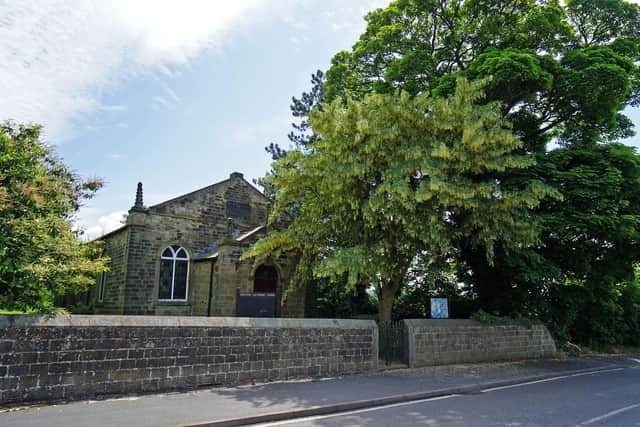Grade II-listed Derbyshire church could be converted into home
and live on Freeview channel 276
Proposals to transform the historic Ridgeway Methodist Church, on Ridgeway Moor, Ridgeway, have been submitted to council planners and will require listed building consent.
Described as a ‘typically Wesleyan’ chapel, dating back to 1806, the building is currently vacant and developers say their plans will help to preserve it.
Advertisement
Hide AdAdvertisement
Hide AdThe church is located on Green Belt land within the Moss Valley Conservation Area.


Previous applications to convert the building have been agreed by planners at North East Derbyshire District Council.
The latest proposal would see the rear of the building extended at ground floor level. Planning documents, published on the council’s website, reveal the alterations which are planned for the chapel’s interior and exterior.
A heritage statement says: “The proposal is to gain listed building consent for the internal renovation of Ridgeway Methodist Chapel, partial replacement of stained glass windows, demolition of the rear vestry extension and construction of a larger extension with basement.”
Advertisement
Hide AdAdvertisement
Hide AdDevelopers are promising a ‘sympathetic’ conversion of the building.
Their statement adds: “The alterations have been primarily considered alongside Historic England’s Conservation Principles, Policies and Guidance (2008) to ensure that the significance of the heritage asset is preserved, and overall it is suggested that historic and aesthetic values are those most applicable."
Plans say that aside from the church organ which was installed in 1908, ‘all historic elements are to remain in situ’.
"To afford greater natural light into the chapel hall, it is proposed to remove the lower parts of the stained glass from the window frames and re-install them in the extension windows,” the heritage statement says.
Advertisement
Hide AdAdvertisement
Hide Ad"Although the stained glass dates from 1901 and is not original, as a display of ecclesiastical artistic merit associated with places of worship it doubtless has aesthetic and historic value.”
Developers argue the proposals will ‘preserve the significance of the building and the character of the conservation area’.
"The scheme preserves the fundamental historic and aesthetic values attached to the building, whilst its continued presence in the settlement also promotes remaining communal significance,” the statement adds.